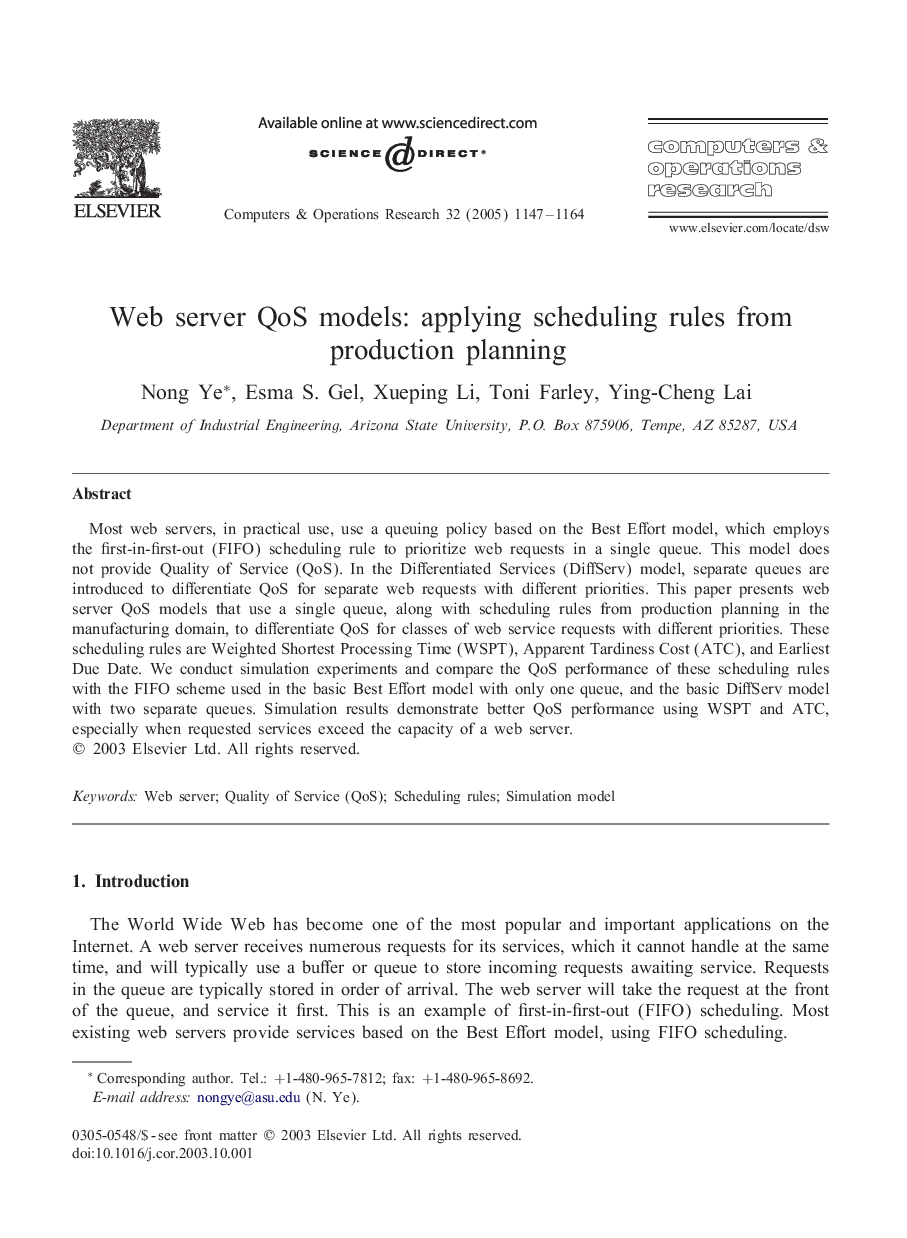| Article ID | Journal | Published Year | Pages | File Type |
|---|---|---|---|---|
| 10347314 | Computers & Operations Research | 2005 | 18 Pages |
Abstract
Most web servers, in practical use, use a queuing policy based on the Best Effort model, which employs the first-in-first-out (FIFO) scheduling rule to prioritize web requests in a single queue. This model does not provide Quality of Service (QoS). In the Differentiated Services (DiffServ) model, separate queues are introduced to differentiate QoS for separate web requests with different priorities. This paper presents web server QoS models that use a single queue, along with scheduling rules from production planning in the manufacturing domain, to differentiate QoS for classes of web service requests with different priorities. These scheduling rules are Weighted Shortest Processing Time (WSPT), Apparent Tardiness Cost (ATC), and Earliest Due Date. We conduct simulation experiments and compare the QoS performance of these scheduling rules with the FIFO scheme used in the basic Best Effort model with only one queue, and the basic DiffServ model with two separate queues. Simulation results demonstrate better QoS performance using WSPT and ATC, especially when requested services exceed the capacity of a web server.
Related Topics
Physical Sciences and Engineering
Computer Science
Computer Science (General)
Authors
Nong Ye, Esma S. Gel, Xueping Li, Toni Farley, Ying-Cheng Lai,
